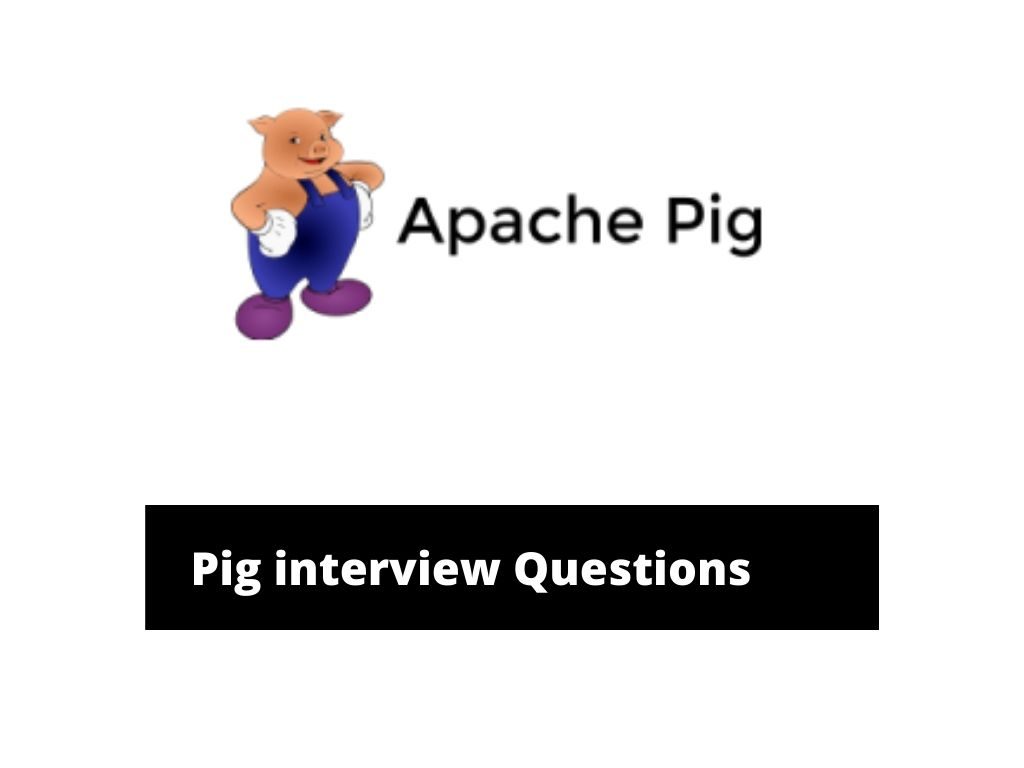Hadoop pig interview questions and answers
Hadoop pig interview questions and answers, Are you looking forward to learning pig interview questions? Or casually looking for the list of Top rated Interview questions and Answers on pig Hadoop 2019? Then you’ve landed on the right Path which is packed with best-advanced pig real-time interview questions which were asked in most of the Interviews nowadays.
If you are the one who is a hunger to get the job but not sure what type of Questions that you will face During the Interview on Hadoop pig interview questions, then just stop worrying and Follow our Advanced pig real-time interview questions and answers. All the below mentioned questions are prepared by the experienced Professionals of India’s Leading Big Data Training institute Professionals. So one can easily crack the Hadoop-Pig interview with this checklist below.
Hadoop Pig Interview Questions and Answers for 2020.

What is a pig?
Answer: Pig is an Apache open source project which is run on Hadoop, provides an engine for data flow in parallel on Hadoop. It includes language called pig Latin, which is for expressing these data flow. It includes different operations like joins, sort, filter.etc and also ability to write User Define Functions (UDF) for processing and reading and writing. pig uses both HDFS and MapReduce i.e, storing and processing.
What is the difference between pig and SQL?
Answer: Pig Latin is a procedural version of SQl.pig has certain similarities, more difference from sql.sql is a query language for the user asking the question in query form.sql makes answer forgiven but don’t tell how to answer the given question. suppose, if the user wants to do multiple operations on tables, we have written multiple queries and also use the temporary table for storing, SQL is support for subqueries but intermediate we have to use temporary tables, SQL users find subqueries confusing and difficult to form properly.
How Pig differs from MapReduce?
Answer: In MapReduce, group by an operation perform at the reducer side and filter, projection can be implement in the map phase. pig Latin also provides standard-operation similar to map-reduce like order by and filters, group by..etc.
What are the execution modes of Pig?
Ans: Local Mode: Pig operation will be execute in a single JVM. MapReduce Mode: Execution will on the Hadoop cluster.
Differentiate Between Piglatin And Hiveql?
Some of the difference is
1. It is necessary to specify the schema in HiveQL, whereas it is optional in PigLatin.
2.HiveQL is a declarative language, whereas PigLatin is procedural.
3.HiveQL follows a flat relational data model, whereas PigLatin has a nested relational data model.
What Is The Usage Of Foreach Operation In Pig Scripts?
Ans: FOREACH operation in Apache Pig is use to apply a transformation to each element in the data bag, so that respective action is perform to generate new data items.
Syntax- FOREACH data_bagname GENERATE exp1, exp2.
What is the difference between Group and COGROUP?
Ans: GROUP operator is to grouping the data in a single relation and COGROUP is for making the relation in GROUP and JOIN.
What do you mean by UNION and SPLIT operator?
Ans: By using a UNION operator we can merge the contents of two or more relations and a SPILT operator is to divide the single relation into two or more relations.
What Is A Udf In Pig?
Ans: If the in-built operators do not provide some functions then programmers can implement those functionalities by writing user-defined functions using other programming languages like Java, Python, Ruby, etc. These User Defined Functions (UDF’s) can then be embed into a Pig Latin Script.
why should we use ‘filters’ in pig scripts?
Ans: Filters are similar to where clause in SQL filter which contains predicate. If that predicate evaluates to true for a given record, that record will be passed down the pipeline. Otherwise, it will not predicate contain different operators like ==,>=,<=,!=.so,== and != can be applied to maps and tuples.
A= load ‘inputs’ as(name,address)
B=filter A by name matches ‘Prwatech*’;
if you’re an experienced professional looking for some help on cracking interviews with experience? or the one who is casually looking for Hadoop pig interview questions and answers for experienced Hadoop pig interview questions and answers for experienced? then stop your hunt get advice from your Big Data Training institute experts who can help you understand the technology from scratch.

